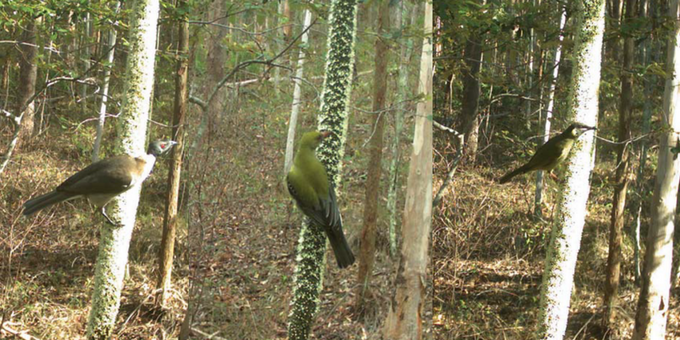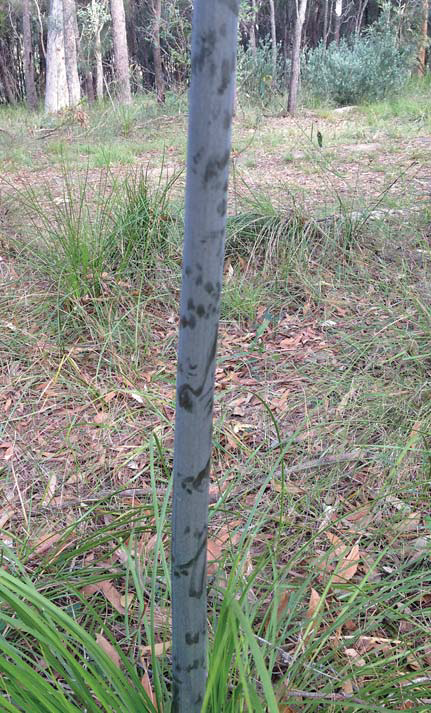Header: A Squirrel Glider photographed at 1.15am using the Reconyx HC600 motion-sensor camera.
At a recent Land for Wildlife event, Keith McCosh, Land for Wildlife Officer from Scenic Rim, showed me markings on the waxy/milky outer coating on a new flower stalk of a Xanthorrhoea or Grass Tree.

After looking carefully at these markings I realised they were in fact tiny footprints and scratches. Keith told me these markings belonged to a glider that had recently landed on the stalk to feed on the rich nectar of the flower.

A few months later I visited a Land for Wildlife member in Upper Brookfield and I noticed these same little footprints on one of their Grass Trees that had just finished flowering. I excitedly informed the landholders as to what left the footprints and a plan was devised to install a motion- sensor fauna camera when the Grass Tree next flowered. In late autumn 2014, a camera was fixed next to the flowering Grass Tree to try and capture images of the culprit.
One month later, I collected the camera and to my surprise captured the target – a Squirrel Glider. For seven nights in a row it visited the flower spike, consuming as much nectar as it could over numerous visits throughout the night. As well as a glider, the camera captured Lewin’s Honeyeaters, Noisy Friarbirds and Olive- backed Orioles, all of which feasted on the nectar over a two-week period.
If you happen to be lucky enough to have Grass Trees on your property, be sure to check any recent flower stalks for little footprints. It’s a sure way to know that your property is creating habitat for these special native animals.
Article by Cody Hochen Land for Wildlife Officer Brisbane City Council
